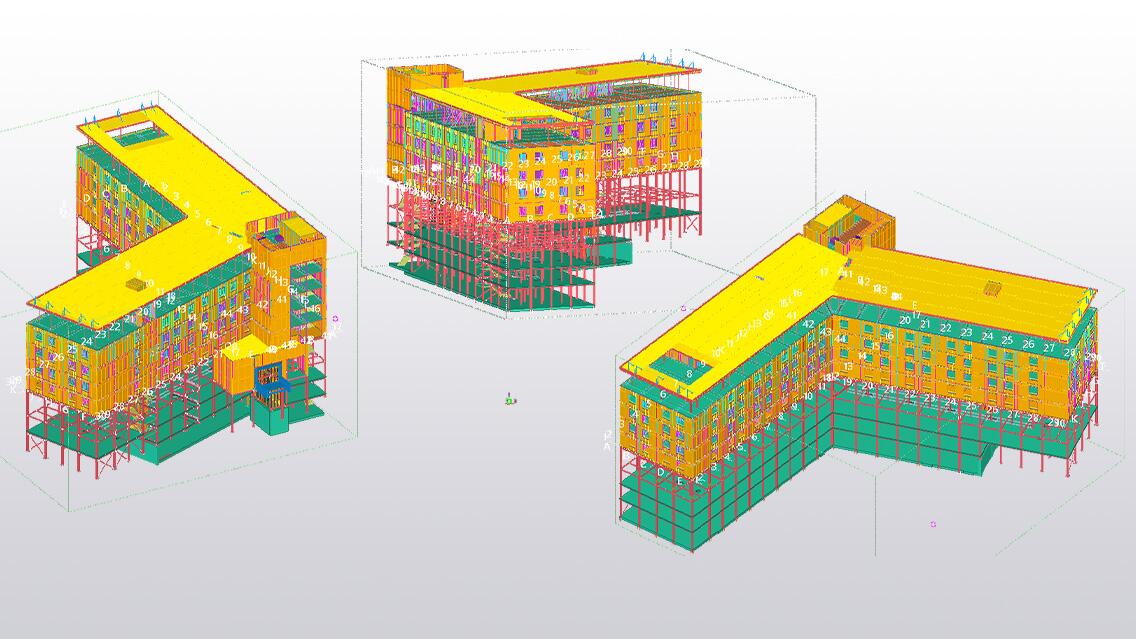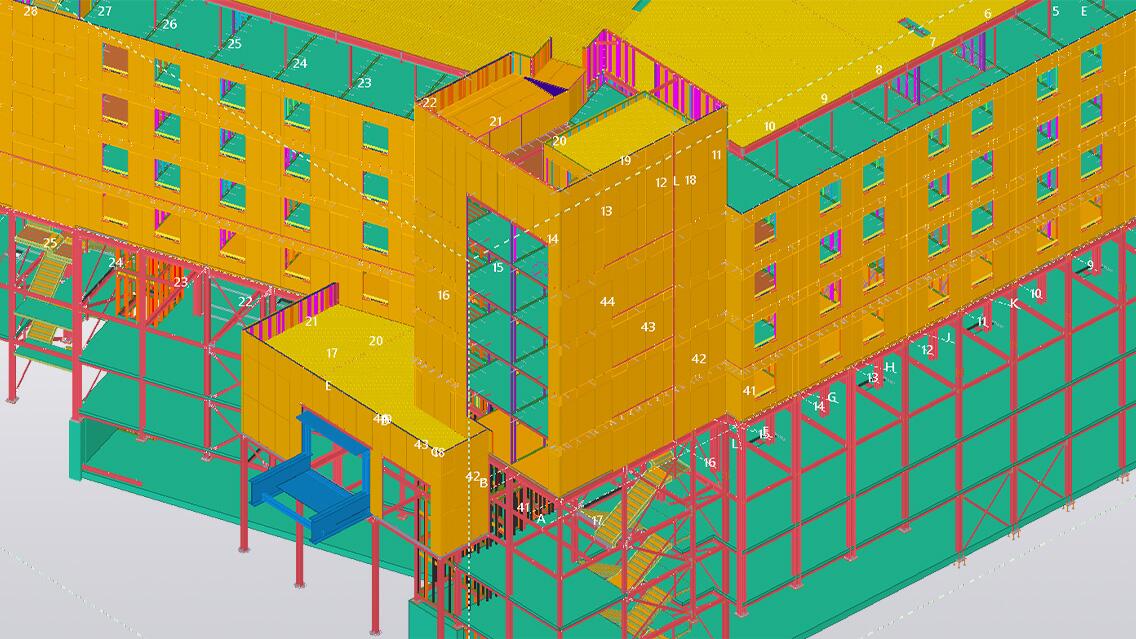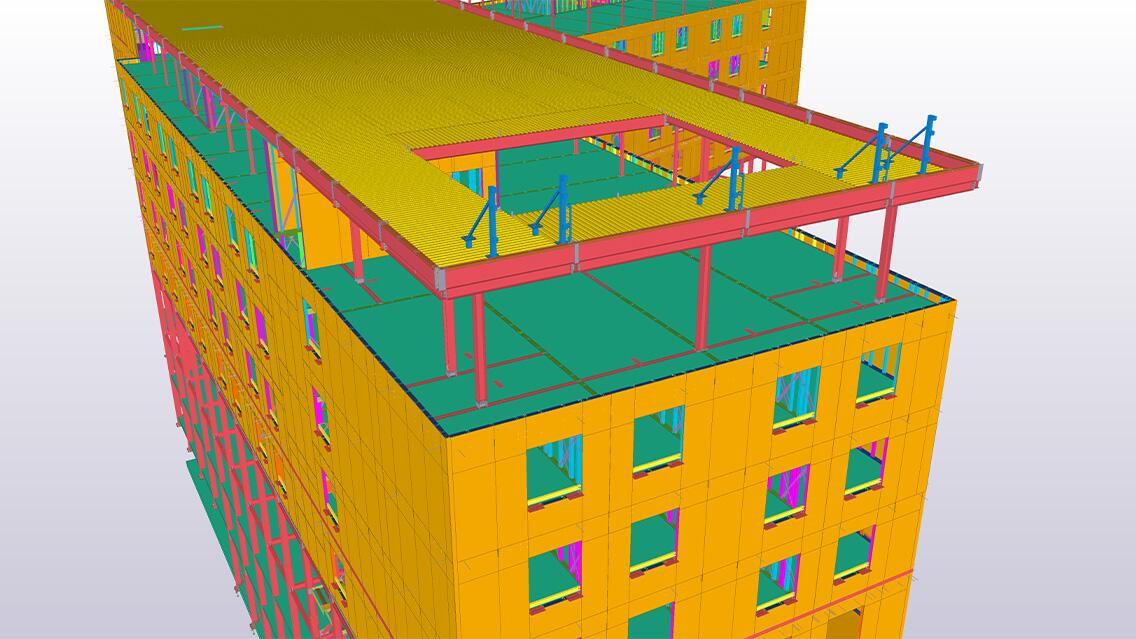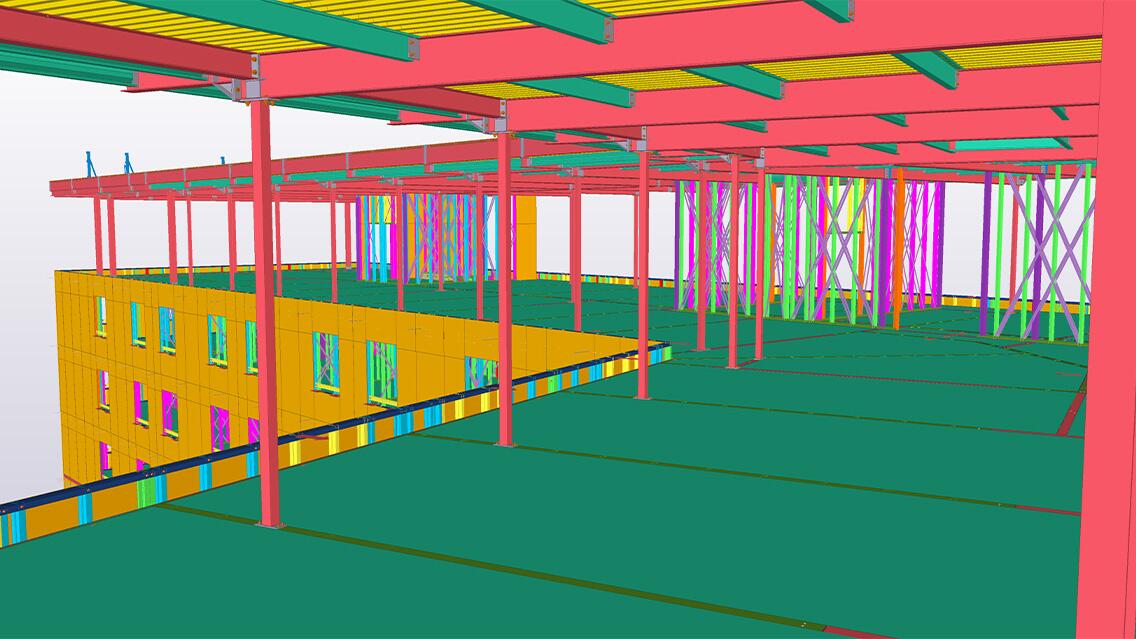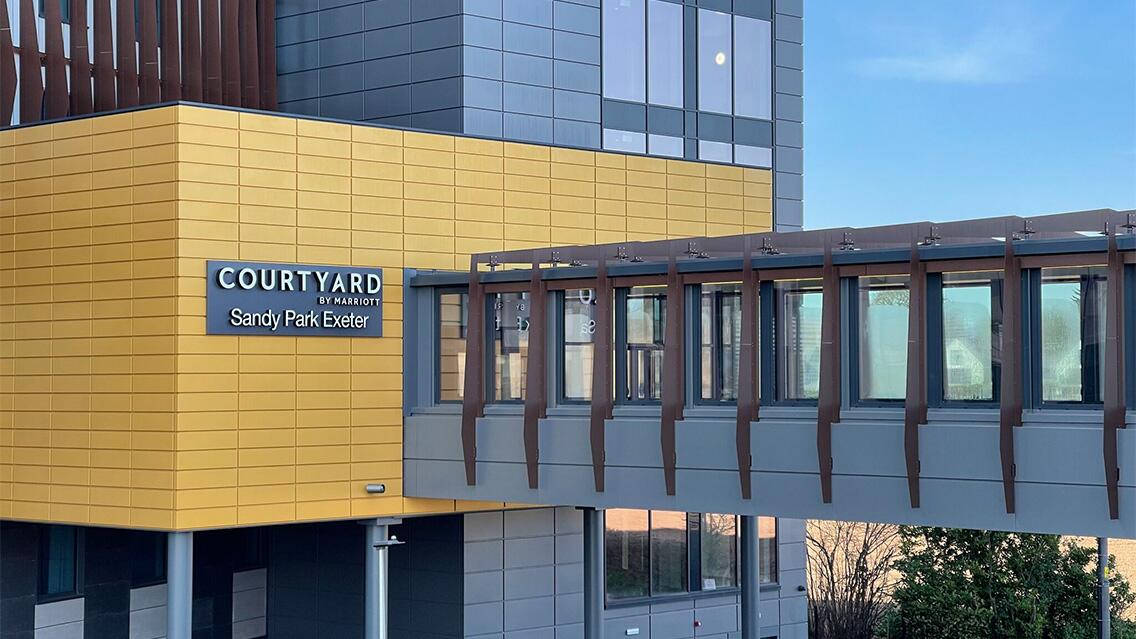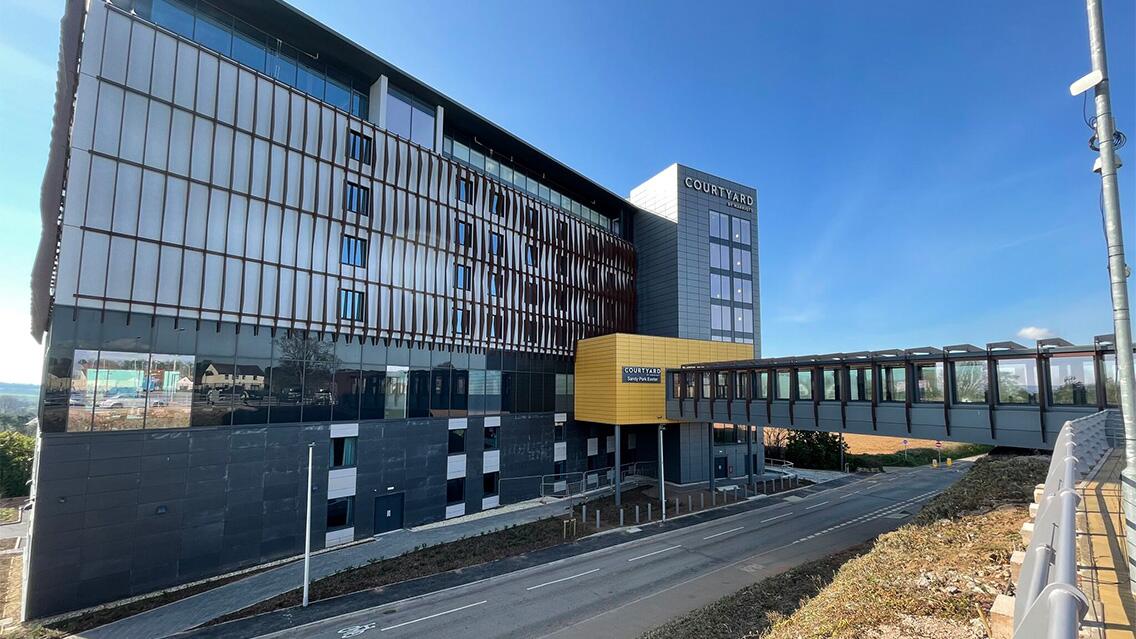Sigmat creates 5 Star hybrid LGSF and hot rolled hotel in Devon. The new ‘Courtyard By Marriot’ Hotel will be the largest commercial hotel in the region with 250 bedrooms, ground floor leisure facilities, and a spectacular rooftop cocktail bar.
Working with Exeter based KTA Architects, Sigmat delivered an all-encompassing offsite MMC solution with 4-levels of hot rolled steel transfer structure with Sigmat’s own SFS infill, 5-levels of Sigmat Light Gauge Steel Framing with 180mm decking throughout the whole scheme, including provision of roofing, lift / stair cores and staircases.
In this project, Sigmat also provided every single stud on the pre-drilled external panels, along with bespoke holes to act as a fixing point for the horizontal rail on each floor to support vertical fins. This unique approach was employed to deliver on the architectural designs brief, which specified an impressive wave effect across the building.
By installing the SFS at the same time as the pre-assembled panels on the upper levels, other trades were able to continue with their works, which in turn accelerated the overall construction programme significantly. As the build progressed, it was extremely rewarding to see the hotel gain landmark status in the South West, the final highlight of which was the completion of the bespoke link bridge which we installed from the Exeter Chief’s main car park directly to the hotel reception.
Alongside additional architectural features, such as vertical aluminium brise soleil, which helps to manage heat and light, the heart of the scheme also included a bespoke, hot-rolled glazed link bridge. This allows for seamless access from the hotel reception to the nearby Sandy Park stadium, home to the Exeter Chiefs Rugby Club. Sigmat’s Design Director, Anthony Longbottom, said the hybrid nature of the scheme had presented unique challenges: “The scheme presented a number of key structural challenges; the vertical brise soleil fins were up to 17m long and fixed directly to the LGSF external wall studs. Torsion of the light gauge sections was prevented using an innovative rail system which also allowed for on-site tolerance and adjustment when installing the fins. A hybrid design of slender hot rolled posts and light gauge steel panels at the upper floor, allowed for a large open plan space with continuous glazing down the full elevation and projecting wrap around canopy. A series of plan trusses within the roof structure required complex wind modelling and stability analysis to facilitate the formation of a feature gull wing roof with 62m2 central opening. The hybrid nature of the build relied on Sigmat’s wealth of hot rolled and cold rolled design expertise.”
Lead architect on the project, Adam Willis from KTA Architects, commented: “This has been a groundbreaking project for us. The hybrid approach of using hot-rolled to level 3 of the structure and light gauge for all upper floors has offered us huge amounts of flexibility and really demonstrated the effectiveness of LGSF as a leading value engineering solution. LGSF is an amazing system for the right project and has huge benefits for this type of scheme, such as the speed of construction onsite and the flexibility to create a cost-effective, custom engineering solution that really delivers.”
A focus on ‘getting it right first time’
The key challenge for this project was the integration of part Sigmat LGSF load bearing frame and a four-storey structural steel frame, which involved the use of both, point and line loads. Combined with this structure, we had to build a top storey clear span sky lounge on top of our LGSF frame and a pedestrian foot bridge over a live and active road to a steel execution class 3. Logistical planning was absolutely key, having an experienced team of planners and managers meant we could bring in the pre-assembled components ‘Just In Time’ with a focus on ‘Get it right first time’ and a meticulous consideration on QA checking. Using Trimble Connect made it possible for us to successfully deliver this project together with our exceptional supply chain who bought into this exemplar project.
The Off-Site Industry has evolved at great pace over the last 30 years. An industry that started from the structural steelwork industry, it has led to the evolution of many off-site building systems that create structures and build systems with both, zero waste and a superior degree of precision. During the design, detailing, manufacture and assembly process, software such as Tekla Structural Designer and Tekla Structures enable us to work in multi material handling environment by integrating steel, timber and concrete design.
The use of Tekla Structures and the associated component libraries allowed us to not only model, but generate CAM (CNC) files for precision manufacture and assembly of our 2D panels erected within an exact tolerance to NSSS standards, combined with use of either our Sigdeck or Sigmat floor Cassettes.
